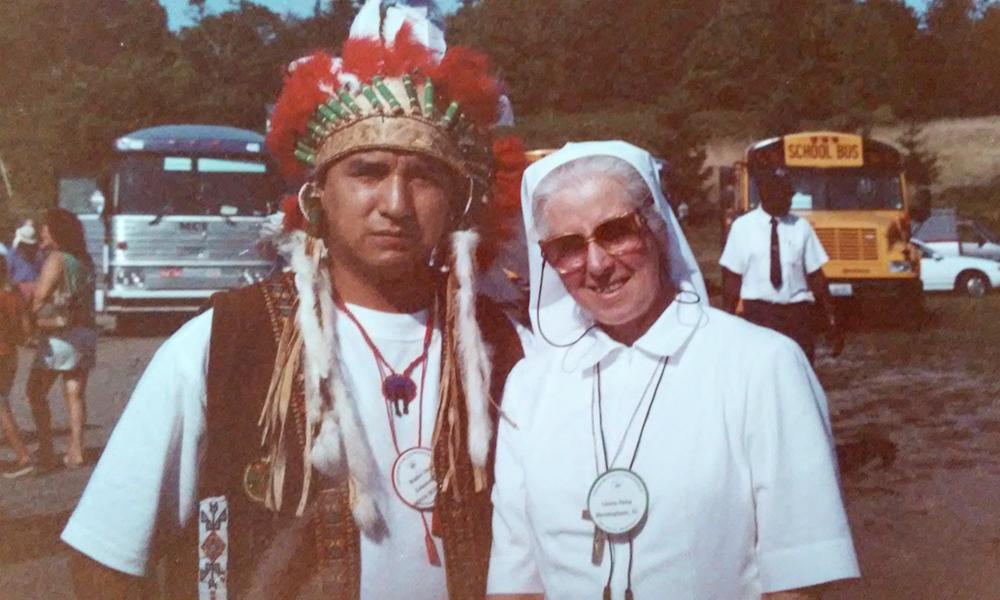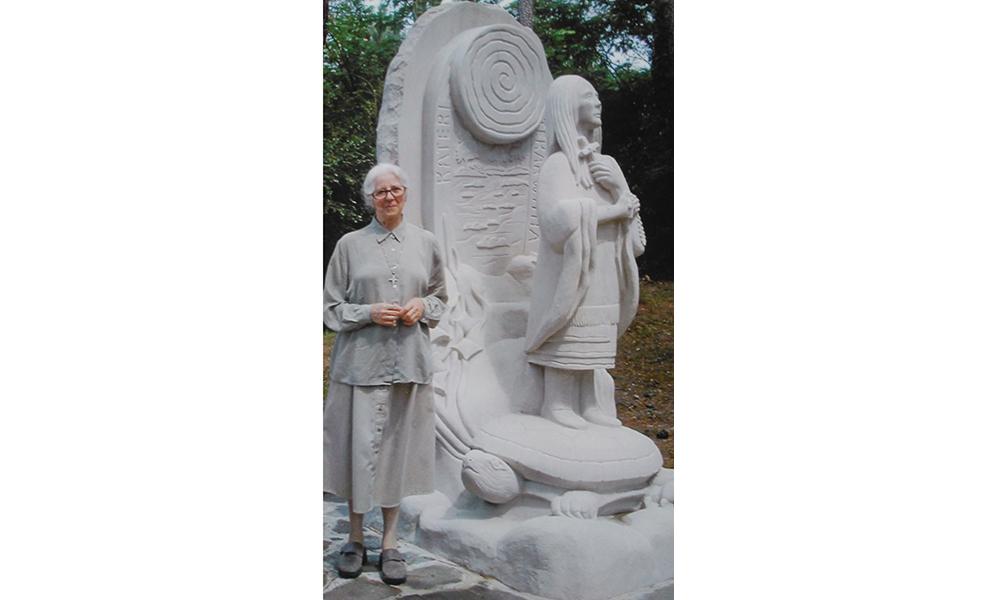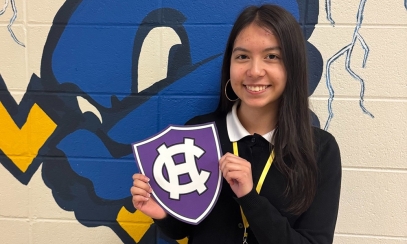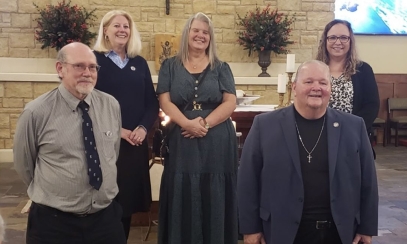
A ‘cry’ in the heart of a Consolata sister
Connecting with our Native American brothers and sisters
Connecting with our Native American brothers and sisters
With July 14, the feast day of St. Kateri Tekakwitha, fast approaching, it is an opportune time to take a look at a major effort within the Diocese of Birmingham that supports the Native American community.
Over 30 years ago, Consolata Sister Adelangela Paita came to the diocese to serve. In the early days of her service within the diocese, she sought ways to live out the missionary charism of her order. During the Lenten season of 1992, she attended a weekend of reflection, dubbed a mission forum, with the Benedictine Sisters of Cullman at Sacred Heart Monastery.
The forum highlighted three groups which experienced suffering in our midst: Native Americans, African Americans, and Latinos. Sister Adelangela felt drawn to the Native American group. With the help of Sister Mary Prinisky, an Adrian Dominican sister, and Cleto Montelongo, a Cherokee, Sister Adelangela decided to take part in a reenactment of the Trail of Tears which occurred between 1830 and 1850, displacing over 100,000 Native Americans from their ancestral lands. The day after Thanksgiving in 1992 in New Echota, GA, Sister Adelangela along with Consolata Sister Elisa Maria Sacchettini began their two-day walk along the infamous path. “What a moving experience,” Sister Adelangela remembers. “Returning to my usual commitment at the Catholic Center of Concern in Birmingham, I carried a new ‘cry’ in my heart.”
Having been so deeply moved by the trail, she made plans to attend the official closing of the reenactment on Dec. 31 of that same year. Although the event was well-attended, Sister realized that “no one was mentioning them as part of our society.” Being a Consolata Missionary sister, she thought, “What could be done to share some consolation in much disarray?”
She felt helpless until a seemingly unrelated event took place at St. Mary’s Catholic Church in Fairfield. In February of 1993, Sister of Notre Dame Mary Brenden Kress attended the church’s Vocation Day and shared a deeply held secret: her mother was a full-blooded Chippawa. This revelation made Sister Adelangela think, “Will I have an ally in doing something to the Indians to feel proud of their heritage and get out of anonymity?”
Sister Kress provided the address of the Tekakwitha National Conference, which is the national Catholic organization of Native Americans. Thanks to help from her order, Sister was able to attend the 1993 Tekakwitha Conference in Seattle, Washington. “What a special blessing indeed: an unveiling of wisdom and paths of learning,” she recalls. Upon returning home, her first inclination was to identify Native People “hiding in Alabama.”
With the encouragement of Father Paul A. Lenz, then director of the National Mission Office, and the support of Sister of St. Ann Kateri Mitchell, Sister Adelangela decided to form a local group. The first gathering was at Our Lady, Queen of the Universe Catholic Church in Birmingham.
The group embraced some of the same goals at the Tekakwitha National Conference: reinforce Catholic identity, affirm pride in our cultures and spiritual traditions, and nurture the relationship between Indigenous People and the Catholic Church.
Around the same time, Bishop David E. Foley was installed as the third Bishop of Birmingham. For Native American Month, the group organized a simple presentation on Blessed Kateri’s life, and to Sister’s amazement, not only was Bishop Foley present but so was Father Lenz. “It was clear that these two church leaders were supporting this emerging group.”
The group started holding meetings monthly and soon outgrew Our Lady, Queen of the Universe, causing them to relocate to St. Patrick’s Catholic Church in Adamsville. Bishop Foley personally expressed his desire to then pastor Father Ray Murrin that he wanted him to promote and support the growth of the group. Growth did happen, and in 1994 with the assistance of the Central Mission Office, the group attended the Tekakwitha Conference in Bejin, MN. It was at the conference that the group received official recognition as the 91 Kateri Circle.
The 91 Kateri Circle returned home and made efforts to introduce the group to parishes and schools throughout the diocese. Members offered Stations of the Cross, spoke to students, and even prepared a Native American crib. A highlight in Sister’s memory is that of the dedication of the statue of Blessed Kateri on the grounds of St. Patrick’s. Led by Bishop Foley and attended by Sister Mitchell, then director of the Tekakwitha Conference, and Chief Charleene Tukaleechee Story, principal chief of the Northeast Cherokee of Alabama, the dedication was well-attended and brought attention to the relatively unknown saint-to-be. Shortly after the dedication, a medicine wheel was added next to the statue to “complete the message of peace offered by Blessed Kateri.” The wheel depicts a circle with the four rays of different colors representing the different races of people living on earth. The line that connects the rays is the image of the Creator.
The statue dedication and the addition of the medicine wheel on the grounds of a diocesan parish renewed the groups energy to “reach out to people at large.” Public presentations followed and even ministry to the incarcerated via Deacon Paul Mullen, one of the groups charter members. The group even reached out at festivals such as the Moundville Festival, De Soto Caverns Festival, and the Guntersville Trail of Tears. The 91 Kateri Circle even participated in the Honor Wall project of The Smithsonian National Museum of Native Americans in Washington D.C. The group is listed as a supporter and recorded at level 4, panel 22, line 39.
When Father Lenz retired, Father Wayne Paysee took over as director and continued to encourage the 91 Kateri Circle. The group traveled on mission to various places including New Mexico and Arizona.
“Joy and gratitude” abounded when it was announced that Pope Benedict XVI would canonize Blessed Kateri on Oct. 21, 2012. “It was clear,” Sister remembers, “our dream was becoming reality.” Sadly, over the course of the years following the canonization, sickness and death contributed to the group’s dwindling numbers. Another blow to the group was Sister Adelangela’s transfer to Phoenix, AZ after 23 years of service to the diocese.
Although Sister Adelangela is in her mid 80s and is currently living at the Consolata motherhouse in Italy, she lovingly remembers the 91 Kateri Circle and its efforts. “Our admiration for St. Kateri and our devotion to the first Native American saint remains in stone and in our hearts!”
The 91 Kateri Circle still meets at St. Patrick’s Catholic Church in Adamsville, 301 Shamrock Trail. For more information about the group, please visit www.saintpatrickcc.com/kateri.




